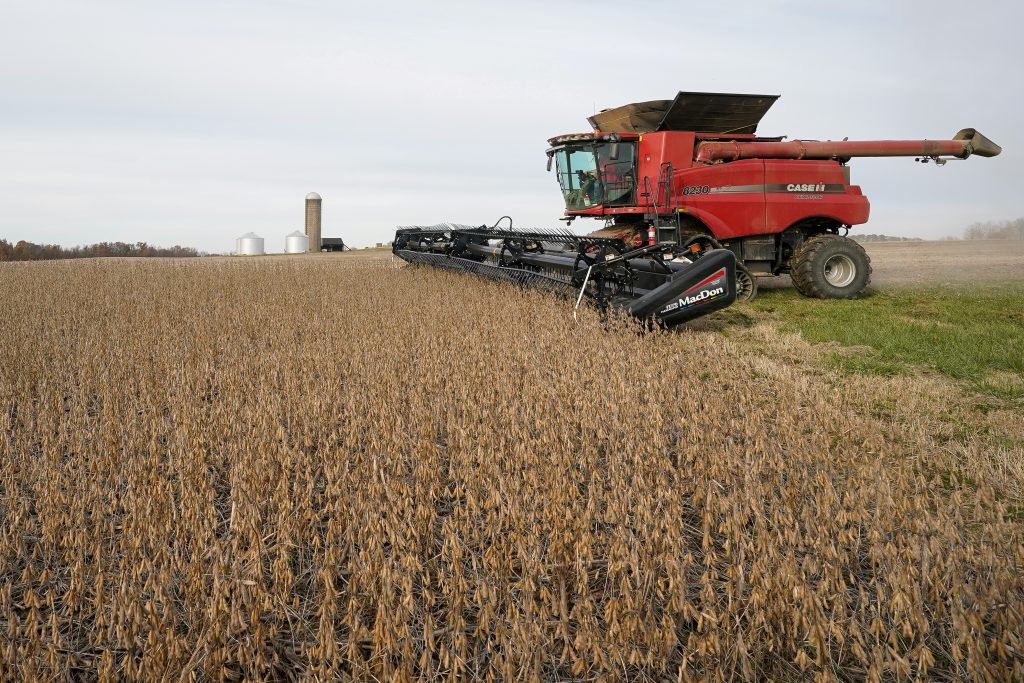Soybeans, Wheat, Corn and the “Everything Rally”
Agricultural commodities are hitting multi-year highs on optimism that a strong global economic rebound will unfold in 2021.

Not to be outdone by the stock market and bitcoin, the agricultural corner of the U.S. financial markets has officially joined the “everything rally,” with many of the most prominent “ags” trading at multi-year highs to start 2021.
It’s been quite the turnaround for agricultural commodities, many of which were trading at extremely depressed levels not so long ago.
As many investors and traders will likely recall, the futures prices of agricultural commodities such as soybeans, corn and wheat all got clobbered during the height of the U.S.-China trade war. For example, back in May 2019, soybean futures hit a 10-year low, trading as low as $8.02/bushel.
At that time, the Chinese had dramatically scaled back their purchases of American soybeans as a retaliatory measure against President Donald Trump’s escalating tariffs. For broader context, consider that Chinese imports of American soybeans totaled over 36 million tons during calendar year 2017. That figure fell off a cliff during calendar year 2018, dropping all the way down to a measly 8 million tons.
It was that sharp decline in demand that ultimately pushed soybean prices to 10-year lows, along with much of the rest of the agricultural sector.
Heading into 2021, the script in ags has completely flipped. Currently, prices are steaming higher as a result of favorable dynamics on both sides of the demand-supply equation.
After a poor year in 2018-2019, many American farmers shifted their soybean acreage to other crops. Soybean plantings in the United States dropped from about 90 million acres to 76 million acres from 2019 to 2020, greatly reducing available supply heading into 2021.
Concurrently, investors and traders in the commodities market are adjusting demand expectations higher in 2021 and 2022, in hopes that the global economy will return to positive growth. In sum, that means demand is expected to grow at a time when global supplies are relatively constrained—ideal conditions when it comes to higher prices in the market.
Case in point, soybean prices broke above $13/bushel in late 2020 for the first time since 2014. Optimism in the ags has been so strong that corn prices actually rallied for 13 straight trading sessions to close out 2020, the longest such streak since 1959. The March futures contract for corn is currently trading above $4.80/bushel.
The rally in wheat prices lagged soybeans and corn but eventually reached the same heights. Wheat prices notched a six-year high on Dec. 30, 2020, closing at more than $6.40/bushel. The chart below illustrates how corn, soybeans and wheat prices have all been trending higher since late summer 2020.
Whether or not the current rally in the agricultural sector continues will largely depend on two key factors.
At the top of the list is the health of the global economy in 2021, which will likely depend on whether the coronavirus pandemic can finally be brought under control. Additionally, price action in the agricultural sector in 2021 could also be affected by the future direction of the U.S.-China trade relationship.
At this time, it isn’t certain how President-elect Joe Biden will move forward with China. Market participants should be aware that a further souring of relations between the two countries could push agricultural commodity prices lower, as was observed in 2018 and 2019.
In addition to direction and volatility, investors and traders considering positions in this sector can also consider pairs trades. Traditionally, one of the most popular pairs in the futures market is wheat vs. corn.
Those familiar with the gold-silver ratio will find an understanding of the wheat-corn spread fairly elementary. Ultimately, deployment of pairs trades such as these are signaled by extremes in the price relationship of the two commodities in question.
For example, when the gold-silver ratio surges to the upper end of its historical range, pairs traders often sell gold and buy silver—playing a potential reversal in the ratio. The opposite position can be considered when the ratio drops to the lower end of its historical range.
The wheat-corn pairs trade is similar, except instead of dividing the price of gold by the price of silver, one simply subtracts the price of corn from the price of wheat.
The chart below illustrates the spread between wheat (/ZW) and corn (/ZC) futures prices over the last couple of years.
As one can see in the graphic above, the price difference between wheat and corn (price of wheat – price of corn = price difference) has ranged between roughly $0.50 and $2.50 during the last five to six years. At this time, the price difference is trading in the middle of that range, at about $1.56 ($6.40 – $4.84 = $1.56).
Theoretically, a pairs trade involving the two might look most attractive when the price difference moves toward either end of the historical range (i.e. an extreme).
For example, if the spread between wheat and corn widened further to the higher end of the historical range, a pairs trader might look to sell wheat and buy corn, expressing a market opinion that the spread would narrow going forward. This trade structure would have worked well earlier in 2020, when the price difference between wheat and corn was well above $2.00.
But if the spread between the two were to decline further (toward the lower end of the historical range), then the opposite position might be considered: long wheat and short corn. A position such as this theoretically benefits as the wheat-corn spread widens.
In addition to the futures markets, investors and traders can also access exposure to the agricultural sector through single stocks and ETFs, such as the Invesco DB Agriculture ETF (DBA), the Teucrium Corn ETF (CORN) and the Teucrium Wheat Fund (WEAT).
Readers can learn more about trading agricultural futures—and specifically the iconic wheat-corn spread—in this previous episode of Closing the Gap on the tastytrade financial network.
To follow all the daily action in the financial markets, TASTYTRADE LIVE (weekdays, 7 a.m. to 4 p.m. Central Time) is also recommended.
This January, give the gift of Luckbox and get a free Luckbox T-shirt! See SUBSCRIBE or UPGRADE TO PRINT (upper right) for more information.
Sage Anderson is a pseudonym. The contributor has an extensive background in trading equity derivatives and managing volatility-based portfolios as a former prop trading firm employee. The contributor is not an employee of Luckbox, tastytrade or any affiliated companies. Readers can direct questions about any of the topics covered in this blog post, or any other trading-related subject, to support@luckboxmagazine.com.



















